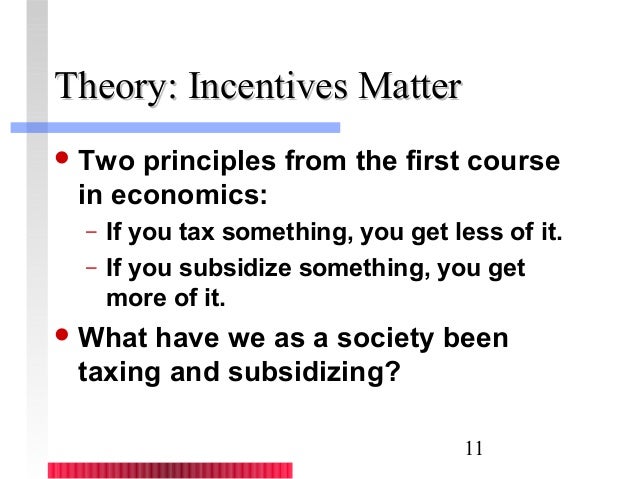
Now we just need a Michael Lewis-type author to glamorize, sensationalize and personalize a Billy Beane-type CFO and we could make a complimentary sequel of books / movies / DVD's..
We can call it Bean-Counter Ball or Laffer Ball, in honor of the Laffer curve.
I'm on it!!
I'm just not sure how to glamorize a profession laden with bow-ties, excel spreadsheets and pocket protectors. ~;::::::;( )"> ¯\_( )_/¯
Wait! I know, I'll ask Mrs. TheSlav. She knows everything.....

Major League Baseball has a payroll luxury tax and an international signing limit tax. The Giants have avoided getting dinged on either of those, moving as nimbly as a Ford F-350 with a Ron Paul bumper sticker.
But until they find a way to uproot AT&T Park and haul it to Reno, the tax man will continue to make a major impact on how they build a roster.
That was the most interesting part of the general discussion around Giants GM Brian Sabean's podium as baseball managers and executives held a media availability session at the Arizona Biltmore Hotel on Monday.
The conversation began with a question about Sabean's team-building philosophy, and how he resists the compulsion to "win" the offseason or arrive at spring training with a finished roster. As we've seen in all three World Series-winning campaigns, the Giants had plenty of personnel churn along the way – Mark DeRosa, John Bowker, Bengie Molina and Aaron Rowand were in the opening-day lineup in 2010, for crying out loud – and the roster-building work is never done. Hunter Pence,
Marco Scutaro, Jake Peavy, Javier Lopez and Ramon Ramirez were all vital midseason acquisitions on teams that won it all.
Free agents are a major component of that change for every team, to some extent. That process plays out in the winter, obviously. But that's not where Sabean has made his most important acquisitions while the Giants have won World Series titles in three of the last five seasons, and there's a simple reason for that: for all the twinkle off those rings, the Giants aren't an appealing destination for players set to strike it rich on the open market."The 25-man roster is a living organism," Sabean said. "It changes every day."
"In some ways we've found … to entice a free agent to come to San Francisco, we're almost in an overpay situation," Sabean said. "I don't need to bore you with the reasons why. We all know. So why get involved with those kinds of (players) when you won't be able to tow the load money wise?"
"We're not a team that's going to overspend. We're not going to bump the luxury tax. Having said that, we're very much on a cash flow basis. We're budgeted into the future. And if you look at our future commitments, they're quite sizable."
In other words, Sabean is trying to tell you that the Giants aren't cheap. Their payroll should approach $170 million this season (below the luxury tax threshold of $189 million), which would fall somewhere between No.5 and No.9 in the major league rankings. They paved the way with gold to make sure players like Buster Posey, Matt Cain and Pence wouldn't stray off the path. Pablo Sandoval's wanderlust aside, they've been highly successful in retaining their own free agents, including Lopez, Peavy, Tim Lincecum, Jeremy Affeldt and Angel Pagan.
And when Sabean's scouts and top advisors shower near-unanimous recommendations on a free agent from the outside world, such as Jon Lester, the club takes its best, most aggressive shot.
But unless the Giants have an established relationship with that player, it's hard for them to close a deal without paying a massive premium that in most cases would threaten their future payroll flexibility. (Rowand's five-year, $60 million albatross, which was panned from the day it was announced in 2007, is the last contract beyond two years that the Giants have given to an external free agent.)
The main reason it's so hard to lure those players? You can express it with a number: 13.3.
That's the top income tax rate in California. It's more than double the top tax rate in all but a handful of states with major league franchises. For example, Sandoval will pay 5.15 percent in Massachusetts. Florida, Texas and Washington have no state income tax.
You can shield some earnings by structuring them in the form of a signing bonus. But contracts are getting bigger and bigger, which means the tax bite is, too.
"It's exponential when you get into the size of some of these numbers," Sabean said. "It makes a difference."
Sure, the Dodgers, Angels, Padres and A's are fighting the same Golden State constraint. Form 540 hasn't stopped the Southern California teams from luring some of the game's biggest free agents. Then again, do you really consider it a wise baseball decision to be paying $30 million to a 41-year-old Albert Pujols in 2021?
Add it all up and it's simple math: the Giants must have success by developing or trading for hitters and doubling down their dollars on pitchers who want to sign with them. As players like Pence, a Texas native, can attest, sometimes it's a matter of just getting a guy in the door and allowing him to experience what it's like to play in San Francisco, with sellout crowds every night, to entice him to stay.The Angels had to overpay players like Pujols and Josh Hamilton. The Giants might have had to overpay more, since there's the enduring perception among free-agent hitters that AT&T Park will take a water cannon to your slugging percentage.
Although Giants ownership is treating the $189 million luxury tax threshold as a hard cap, Sabean wouldn't rule out exceeding the international signing limits and paying the dollar-for-dollar tax on the overage – just not to the extent that the Red Sox were after pledging $31.5 million to heralded Cuban teenager Yoan Moncada. (That's a $63 million expenditure when you include the penalty.)
"We're not built for that," said Sabean, "and neither is most of baseball."
No, the Giants have to build a different way – one that requires a little improvisation at midsummer. It's worked so far. So well, in fact, that it's led to one more little tax obligation – more than $7000, by most accounts.
Those diamond-encrusted World Series rings are taxable assets, after all.
23. San Francisco Giants
Projected 2015 Wins: 84.5
Projected 2015 Payroll: $170,627,999
Projected Cost Per Win: $2,019,266
Projected 2015 Payroll: $170,627,999
Projected Cost Per Win: $2,019,266
Notable Pre-Arbitration Players
- 2B Joe Panik
Others: RP Jean Machi, RP George Kontos, OF Juan Perez, C Andrew Susac, RP Hunter Strickland, IF Matt Duffy
3 Best Values
| Player | 2015 WAR | Value | 2015 Salary | Net Value |
|---|---|---|---|---|
| Buster Posey | 6.4 | $35.2 M | $17.278 M | +$17.922 M |
| Madison Bumgarner | 4.3 | $23.65 M | $6.95 M | +$16.7 M |
| Brandon Crawford | 2.4 | $13.2 M | $3.175 M | +$10.025 M |
3 Worst Values
| Player | 2015 WAR | Value | 2015 Salary | Net Value |
|---|---|---|---|---|
| Tim Lincecum | 0.3 | $1.65 M | $18.0 M | -$16.35 M |
| Matt Cain | 1.3 | $7.15 M | $20.833 M | -$13.683 M |
| Hunter Pence | 2.5 | $13.75 M | $18.5 M | -$4.75 M |
Notes
- A lack of pre-arbitration talent, coupled with the $18 million salary of Tim Lincecum, earns the Giants a low spot in the rankings here.
- Matt Cain is being paid like an ace with his $20.833 million salary, and the Giants need him to pitch like one. The 1.3 zWAR may seem low, but he is a question mark coming back from ankle and elbow surgeries.
- Hunter Pence shows up on the list of worst values, but there is no arguing how much he means to this Giants team. His numbers dropped a bit across the board last season, but he was still a 4.7 WAR player. And at 31, there's no reason he can't at least match that number in 2015.
- Other notable players in either direction include Brandon Belt (+6.85 M) and Casey McGehee (+$6.05 M) on the positive side, and Tim Hudson (-$4.3 M) on the negative side.
There are a lot of numbers and names to digest on the pages that follow, so allow me to first offer up an explanation of what everything means.
The following slides are broken into four sections:
- 2015 Win-Loss and Payroll Projections
At the top of each slide, you will find a projected win total, projected salary and then the projected cost per win (salary/win total).
The win-loss projections come from Vegas odds released for each team, provided here via Business Insider. The payroll projections for each team are courtesy of Roster Resource.
- Pre-Arbitration Players
Below that is a bulleted list of key pre-arbitration players, followed by a quick list of any other players with big-league experience who fall into that category.
This part was the first big determining factor in where each team was ranked. Considering most of the players listed here will be making somewhere between $500,000 and $600,000 during the upcoming season, these are often the biggest values on the roster.
- Top 3 Best/Worst Values
Next up, you'll find each team's three most and least valuable players for the upcoming season, based on the following three-step process.
Step 1: To start with, I took each player's projected WAR for the upcoming season. My personal preference for projections is the ZiPS projections from Dan Szymborski, which can be found in spreadsheet form here. Those projections will be referenced as zWAR throughout the piece and will always refer back to the aforementioned spreadsheet.
Step 2: Based on the FanGraphs value system, and many other outlets agree, 1.0 WAR was worth somewhere between $5-6 million in 2014. We went with the middle ground and called it $5.5 million.
So from there, each player's projected zWAR from Step 1 was multiplied by 5.5. That gave us the player's projected 2015 value in millions of dollars.
Step 3: Each player's salary for the 2015 season was then subtracted from his projected 2015 value, resulting in his 2015 net value.
The three highest and three lowest totals were then highlighted on a pair of tables. Player salaries came again from the team pages ofRoster Resource.
Formula: (2015 zWAR x 5.5) - 2015 salary = net value
It's important to note that pre-arbitration players were not considered for this section. Any player from that group who makes any sort of impact will be a bargain; that's why those players were highlighted at the beginning.

No comments:
Post a Comment